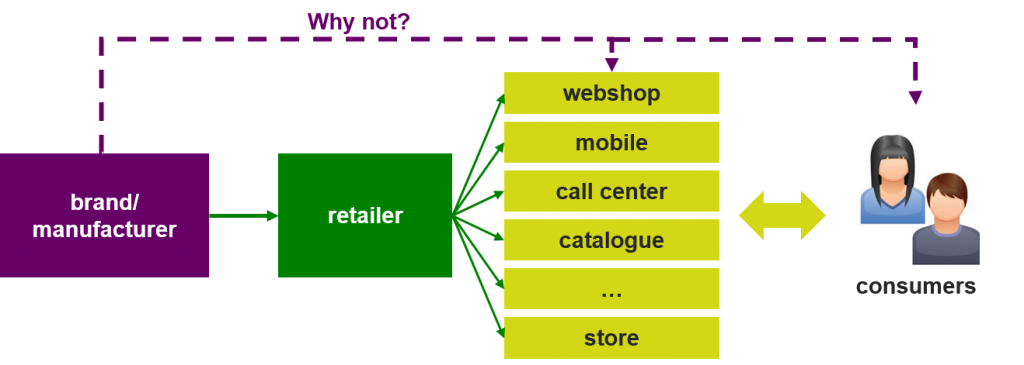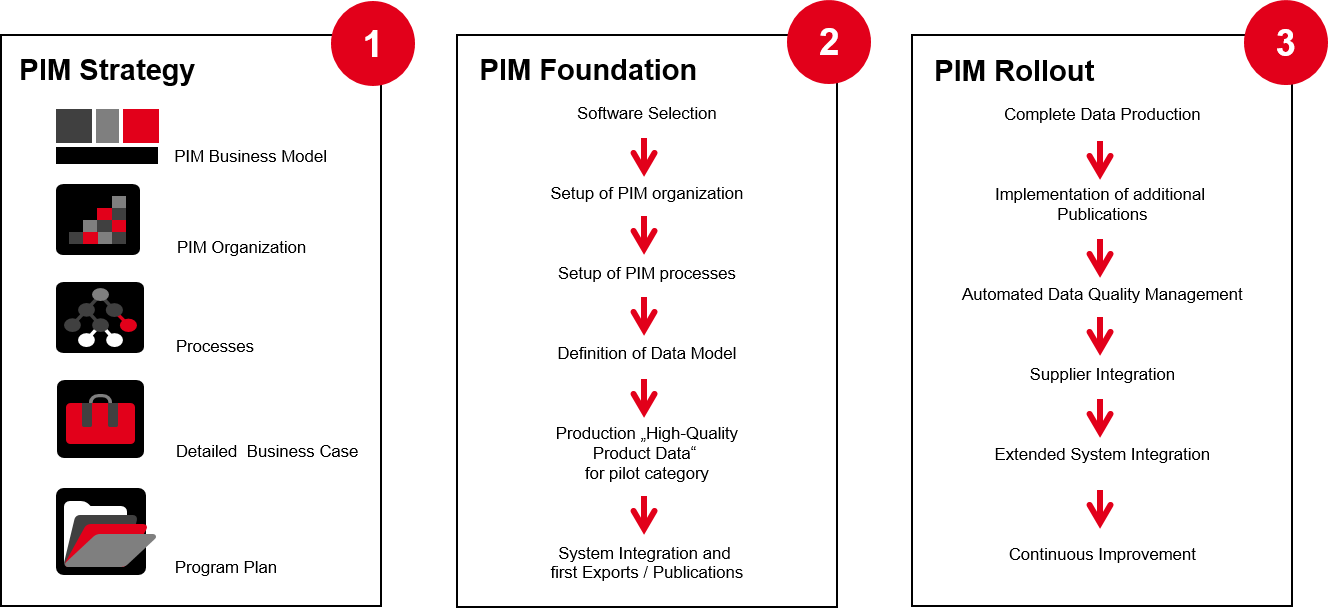Changing Business Processes – Why Manufacturers do not Sell Directly to Consumers
They don’t want to jeopardize relationships with distributors and retailers, and thus, possibly, their own revenues, but they are constantly tempted by the larger margins of selling through direct-to-consumer sales channels. On the other hand, retailers fear to be circumvented and excluded from the sales process.
Many manufacturers are still biding their time but the issue is more relevant than ever. In fact, there are only very few arguments against manufacturers selling directly to consumers. Therefore, it’s only a matter of time.

Some manufacturers already have their own e-commerce sites – a good starting point in bypassing the retail sales channel. In theory, manufacturers can offer their products at lower prices while, at the same time, increasing margins. The real challenge for most manufacturers is the lack of appropriate infrastructure: they will have to first create the necessary conditions to build and operate a successful Web-direct business.
Most manufacturers don’t have any consumer logistics in place and do not know their new target groups. While it is true that – at least for now – traditional distribution channels are still needed, business models will increasingly change as manufacturers will take over more and more retail functions. Therefore, retailers should focus on their strengths and build on them. A good option may be to align with the manufacturers’ strategy of direct sales. For example: If brands want to operate their own e-commerce websites and set their prices, the local retailer could take over logistics and delivery to the customer. Thus, not only is the retailer involved in the process; the manufacturer also gets considerable insight on his customers and their needs.
The manufacturer will save on expensive shipping and return shipping costs, whilst retailers will benefit from an additional sales channel without having to invest. Moreover, increased consumer-direct activity could help manufacturers to achieve a better service and greater customer loyalty. A win-win-situation for all parties involved.
It is certainly not an easy decision to make and there is no golden path to success. One thing is certain: As consumers’ buying behaviour turns increasingly digital, the role of retailers will decrease and manufacturers will seize the opportunity and sell more and more directly to consumers.
Preconditions
For this scenario to become reality, several conditions must be met. On the one hand, customers expect the same functionality they are used to from other online shops. On the other hand, omnichannel retailing is becoming more and more important. Today’s consumers are increasingly networked.
Numerous studies on shopping behaviour have revealed that today’s consumers make extensive use of different distribution channels. Consumers’ attention should therefore be captured through different touchpoints, such as mobile devices, in brick-and-mortar stores or at home on the PC.
There are, however, several factors to be considered:
- Are the manufacturer’s products suitable for direct online sales?
- What is the manufacturer’s goal?
- Is selling direct worth it?
- Can the manufacturer afford selling online?
- What organizational and technical requirements must be met?
- What needs to be done in order to supply the consumer directly?
- How and through which channels should the future customer be addressed?
- What is the future role of retailers?
- When is the right time to start?
To be able to answer these questions, manufacturers must develop an intelligent marketing strategy and a communication concept connecting the different sales and information channels effectively, taking into account their respective strengths and specific characteristics. Amazon’s success is not due to the fact that they sell books and CDs via the Internet, but to the way they do it.
Implementation
Implementing a direct marketing strategy for the manufacturer requires a flexible solution and a technical infrastructure that constantly adapts to a fast-changing market and, at the same time, meets the requirements of consumers, manufacturers and their business models. A Product Information Management (PIM) System will be needed in order to manage and maintain information about products centrally and to prepare them for all the necessary distribution channels in several languages.
Product data can then, at the push of a button, be tailored for specific customers, segments, and touchpoints. This approach not only creates a seamless omnichannel experience but also reduces the costs for complex content management and processing, thus increasing revenues and profits.
Combining and linking product and customer data is the key to success. What counts is delivery of consistent, accurate, highly relevant and timely information on products and services across all channels. One might think that a suitable system and good infrastructure would solve all problems. Far from it! It is an important prerequisite, but the best system is useless if it is not optimally aligned. Technology is important, but analysing and adapting processes and organizational structures to the new challenges is crucial.
Without a suitable business model and marketing approach even the most innovative products will not help manufacturers to successfully position themselves in the market. This role, usually held by retailers, would have to be taken over by manufacturers.

Summing up: The Internet is changing the retail world – manufacturers and retailers will have to adapt to the new situation.
Some major manufacturers already have their own e-commerce sites. The Internet is challenging sales structures and changing them. Manufacturers and retailers should both face these challenges and rethink their business models while there is still time. Only those who accept the challenge and meet the changing customer requirements will survive.
Are you interested to learn more about PIM (Product Information Management)?
We will send you a free information package about PIM (case studies and articles).
Get a free information package now